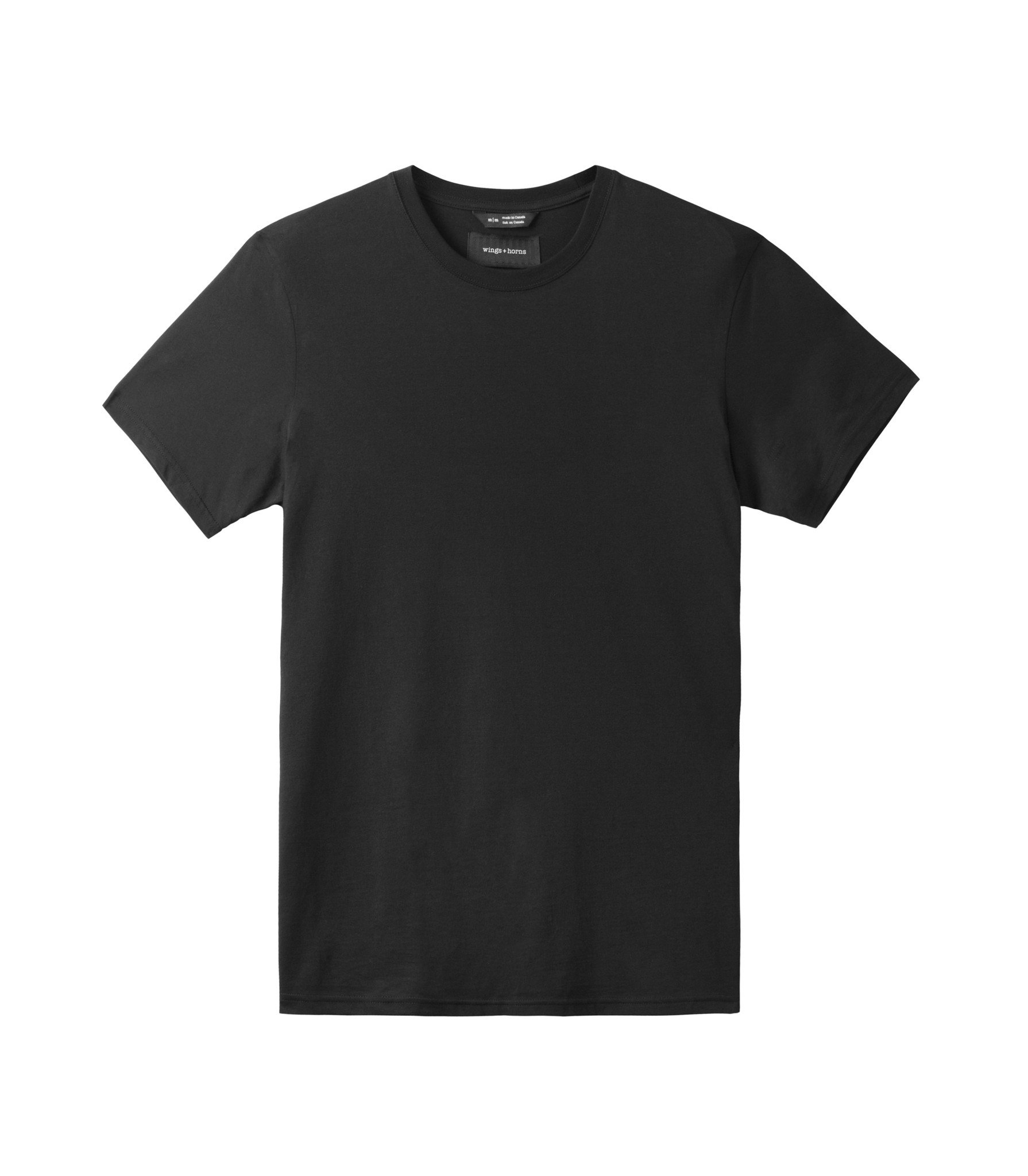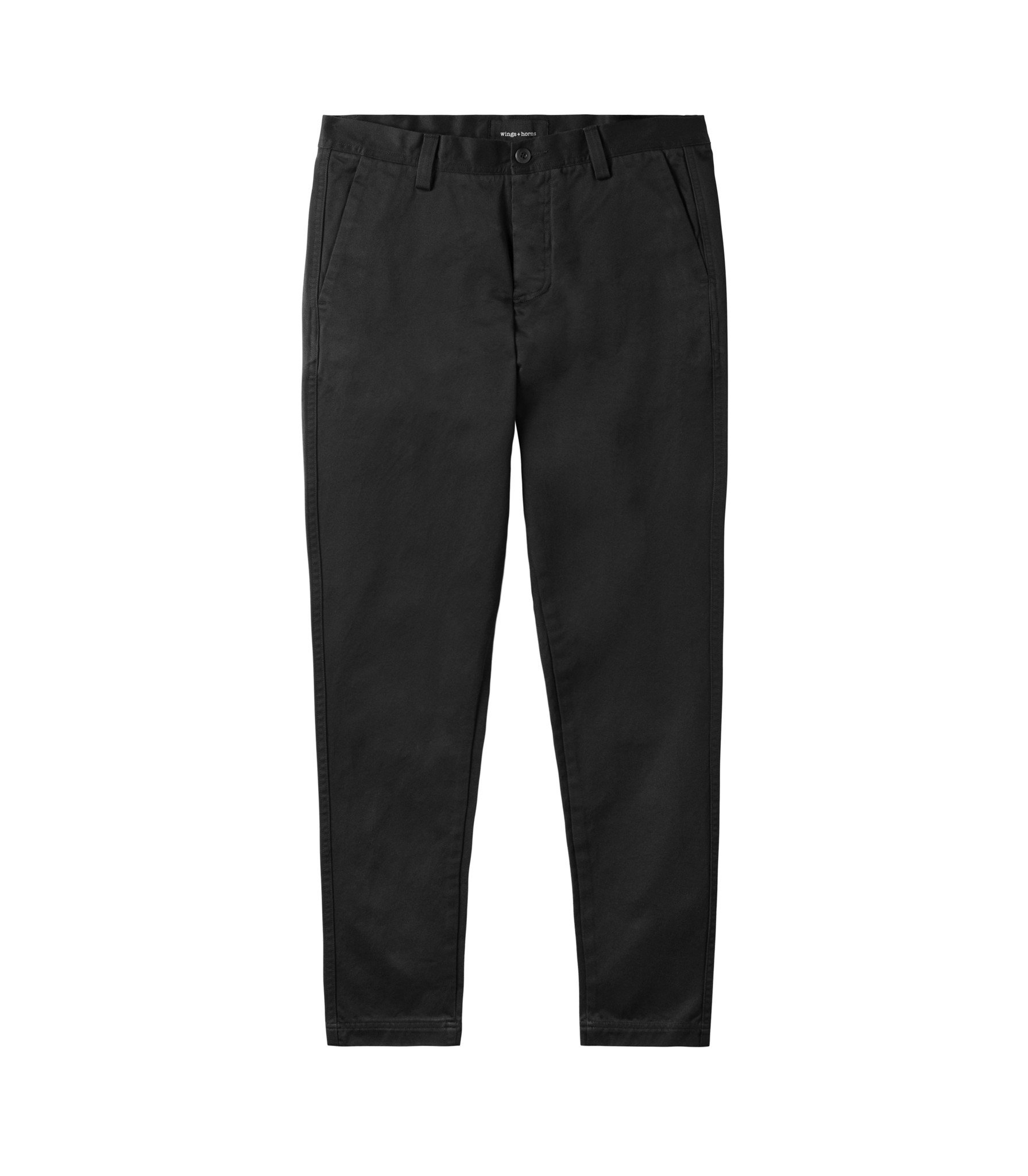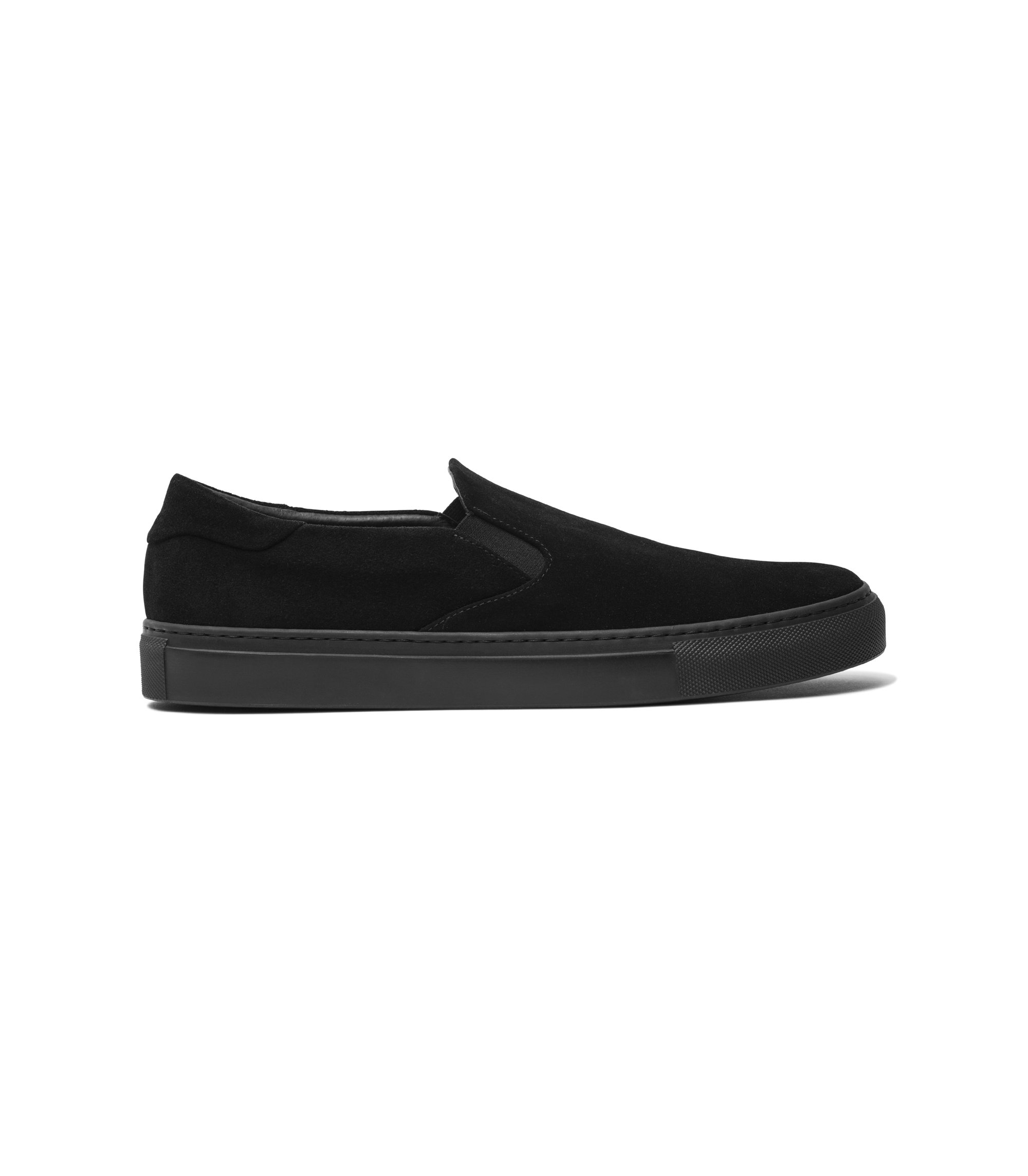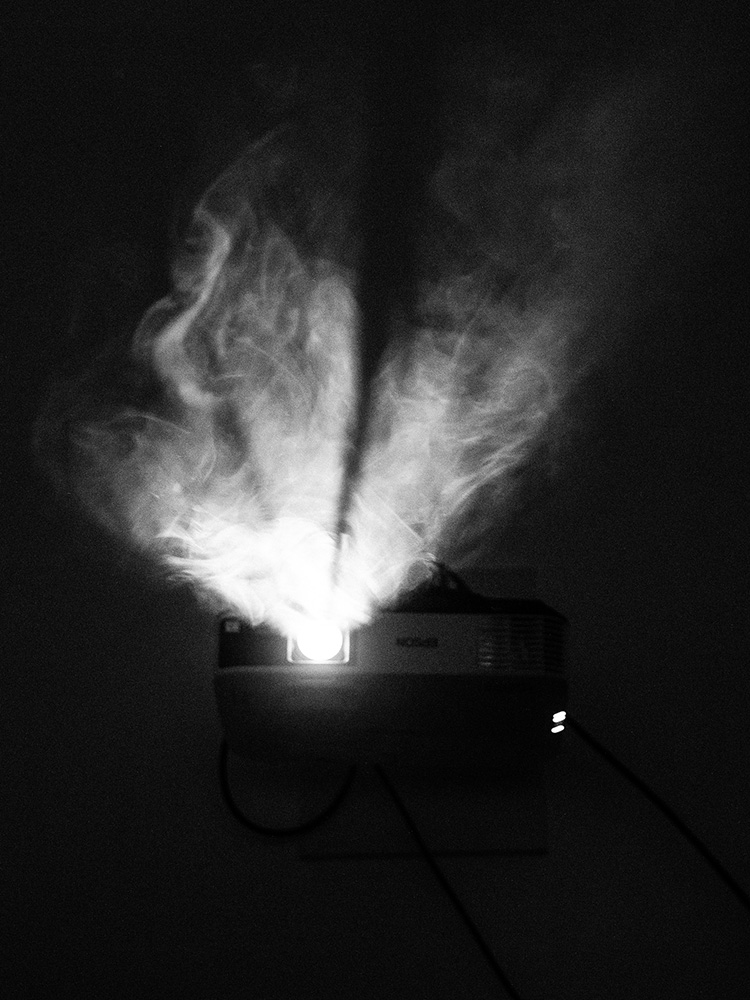15 years ago, Andrew Dadson used white paint to mark a moment in time. It was 2003, and he was at home in his backyard, where he had been growing a living sculpture with his roommate’s plants. On that day, the sculpture was levelled. His roommate cut the grass. Deciding to take the fresh start even further, Dadson painted the lawn white, and took a photo of it from the roof.
Making these two marks—first the painting, then the photo—was the genesis of Dadson’s exploration of time. Since then, the Vancouver-based artist has worked to subvert our usual way of looking at things by exposing the passage of time, its effect on our perception and the underlying structures it conceals.
Painting plants and arranging them into unnatural landscapes is one way Dadson explores these themes. He sources tropical and non-native species from people who are selling or giving them away, hoping they will find a new home. The plants often come with a personality, some sense of their previous owner. As they are hidden by paint they take on a sculptural quality, and this personality is exposed.
The paint is based on an ancient recipe, a biodegradable mixture of milk and earth pigments, or vegetable dyes. It’s what the plants respond best to, and after they’re painted Dadson nurtures them, providing the light, water and care they need to survive.
Dadson uses intense ultraviolet lights to grow the plants in his studio and at gallery exhibitions. Each light is a different hue, washing the plants with colour and casting multiple shadows that give his compositions additional dimension. As the plants grow by the fixed light of these artificial suns, the living painting evolves and shifts, and the unifying colour begins to crack and splinter, revealing the fresh natural colours of the leaves beneath.
Eventually the plants return to their natural state, reversing the painting and the flow of time. This reversal is intended to highlight our effect on the landscape, the tension between how we change and displace nature, and our responsibility to it. It’s an abstract microcosm of nature’s cycle. Something that can never quite be covered up, that always returns, and with the right care, can continue on.
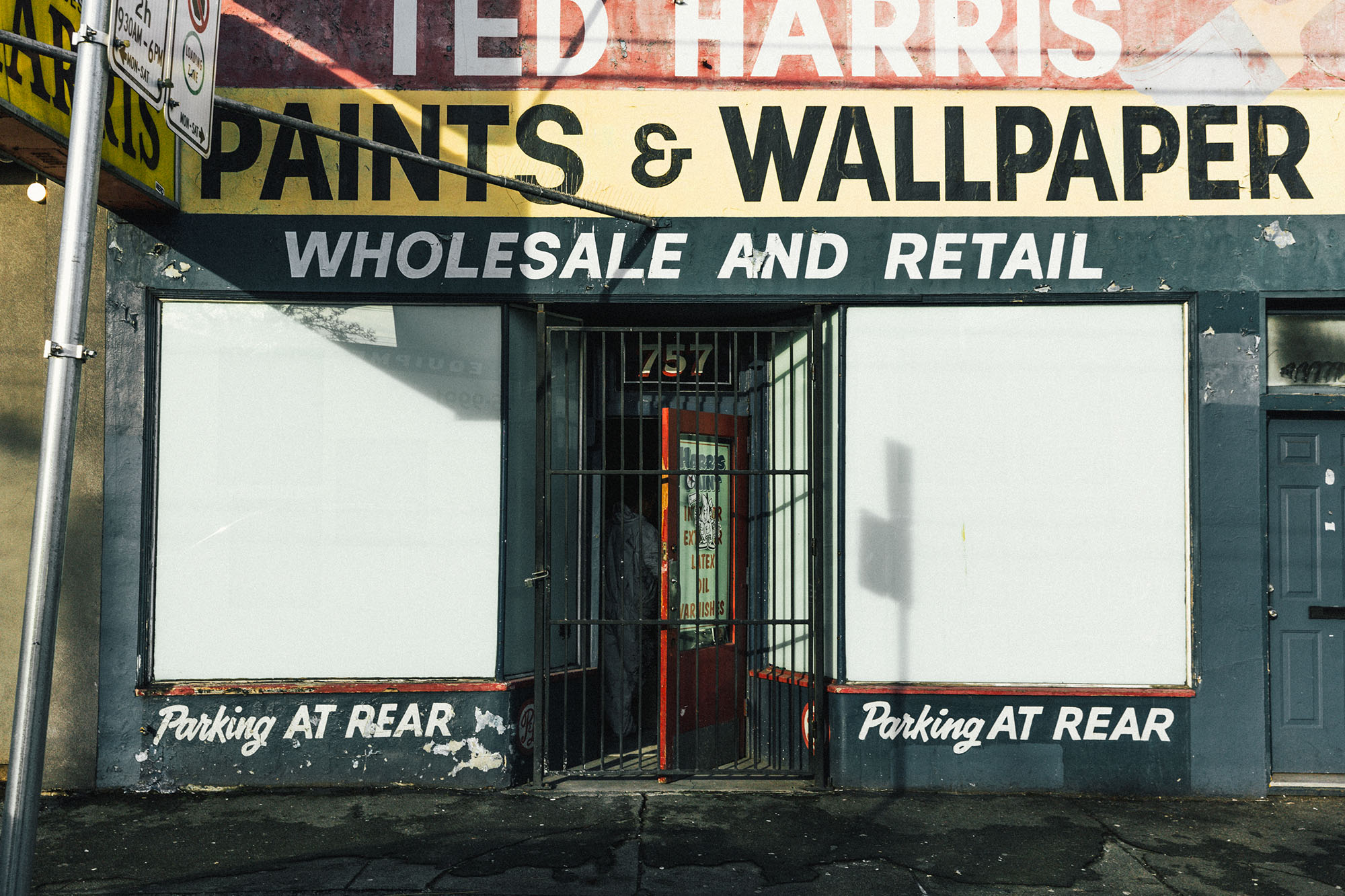
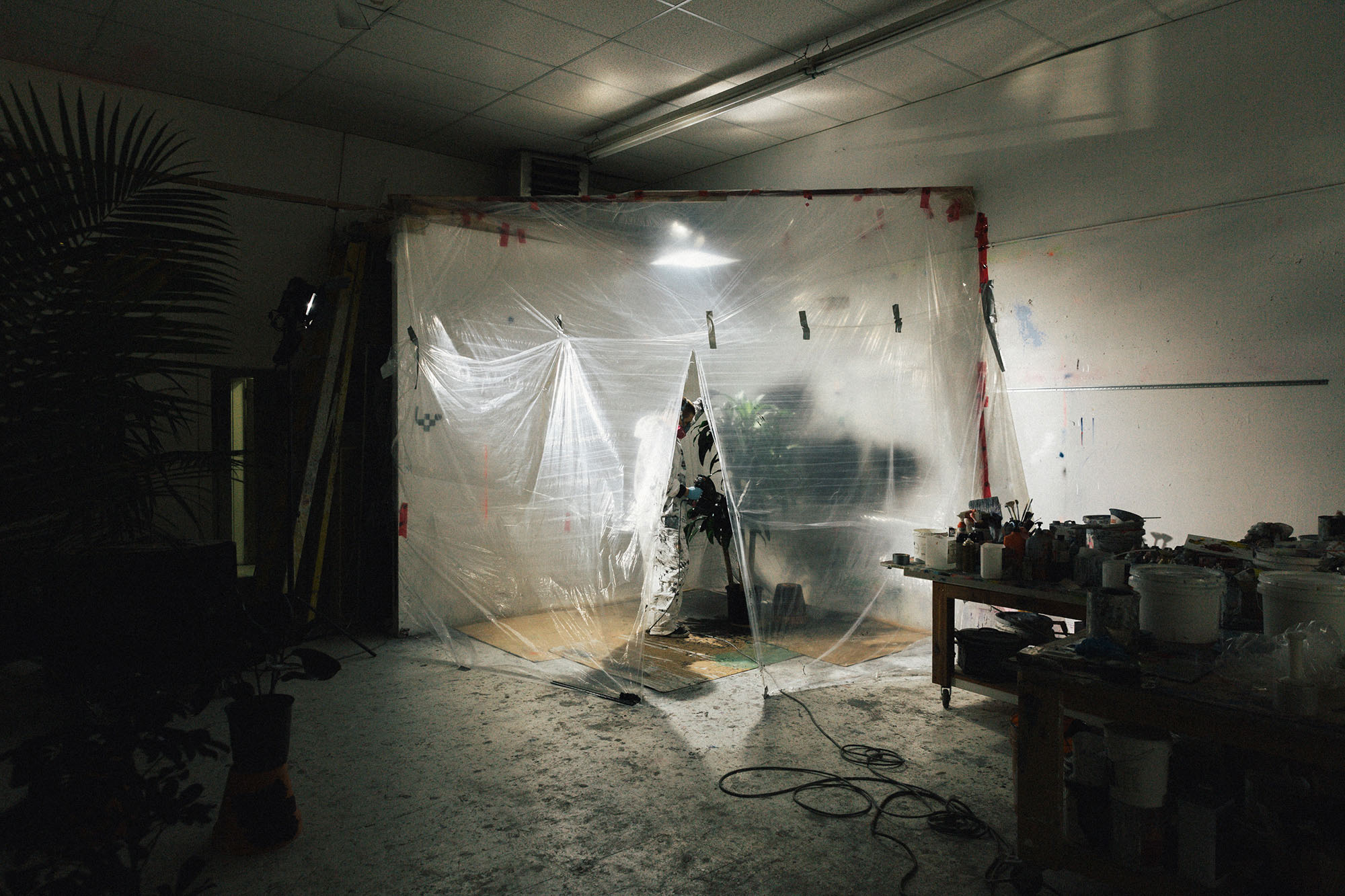
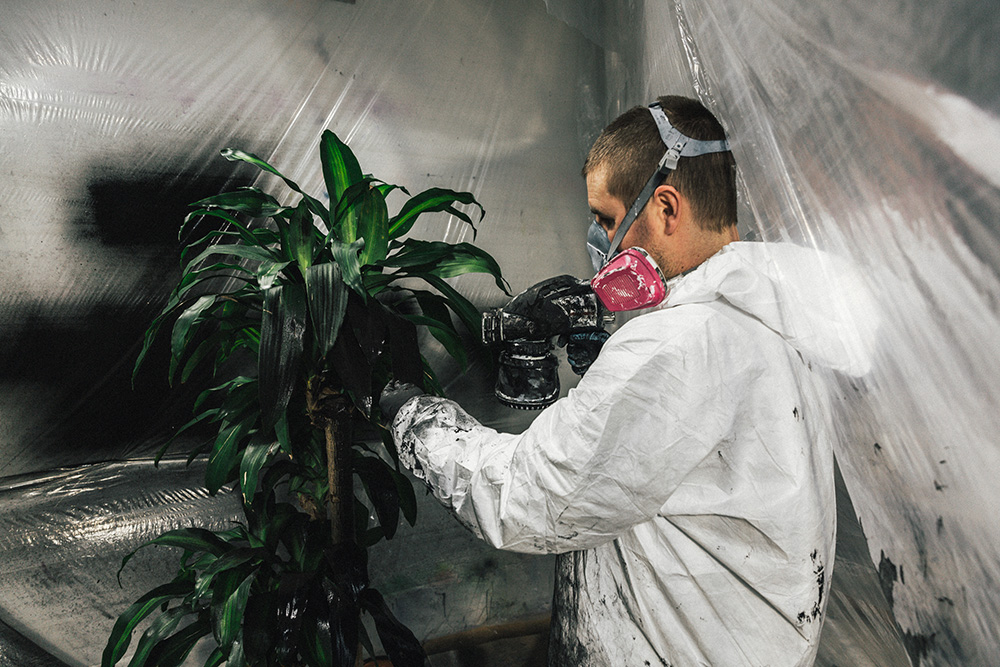
“I’m really interested in the idea of painting on this living landscape, as a mark of time. It’s constantly changing, my act of painting is only one moment in its life. The plants have their own desire to keep growing, to grow the painting away, and make it disappear.”
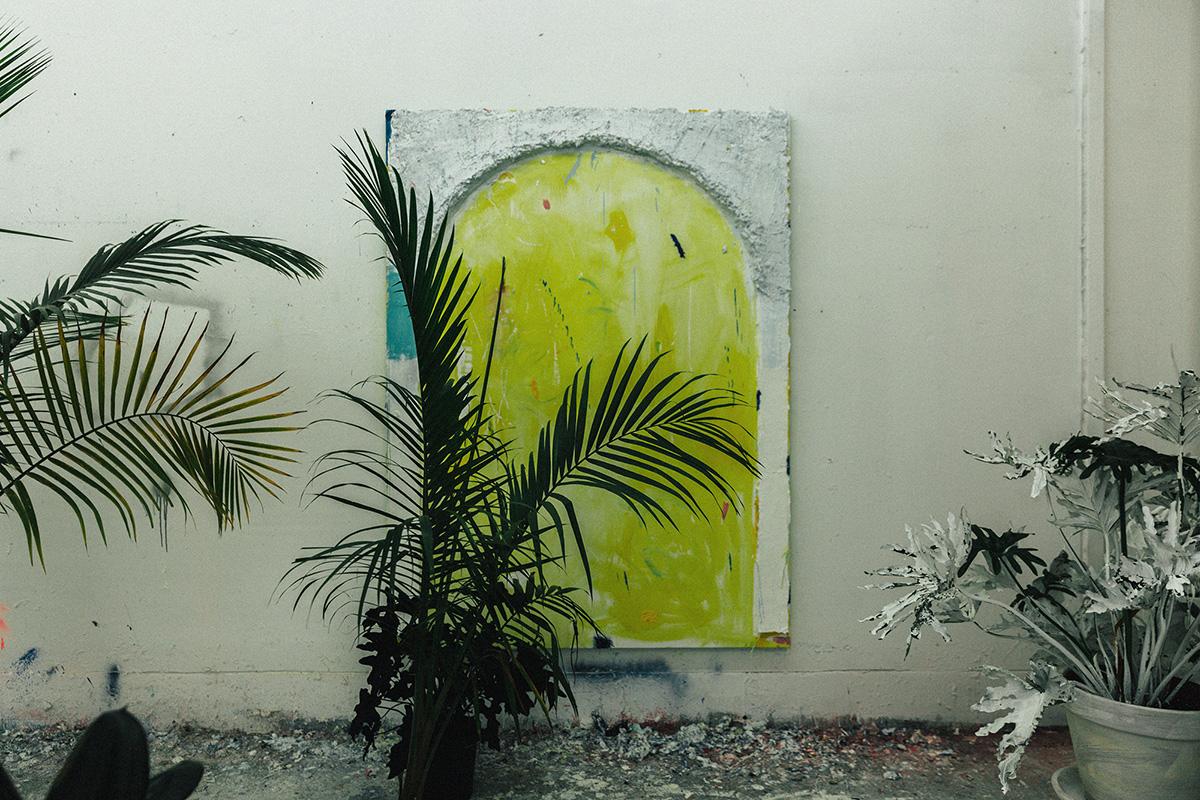
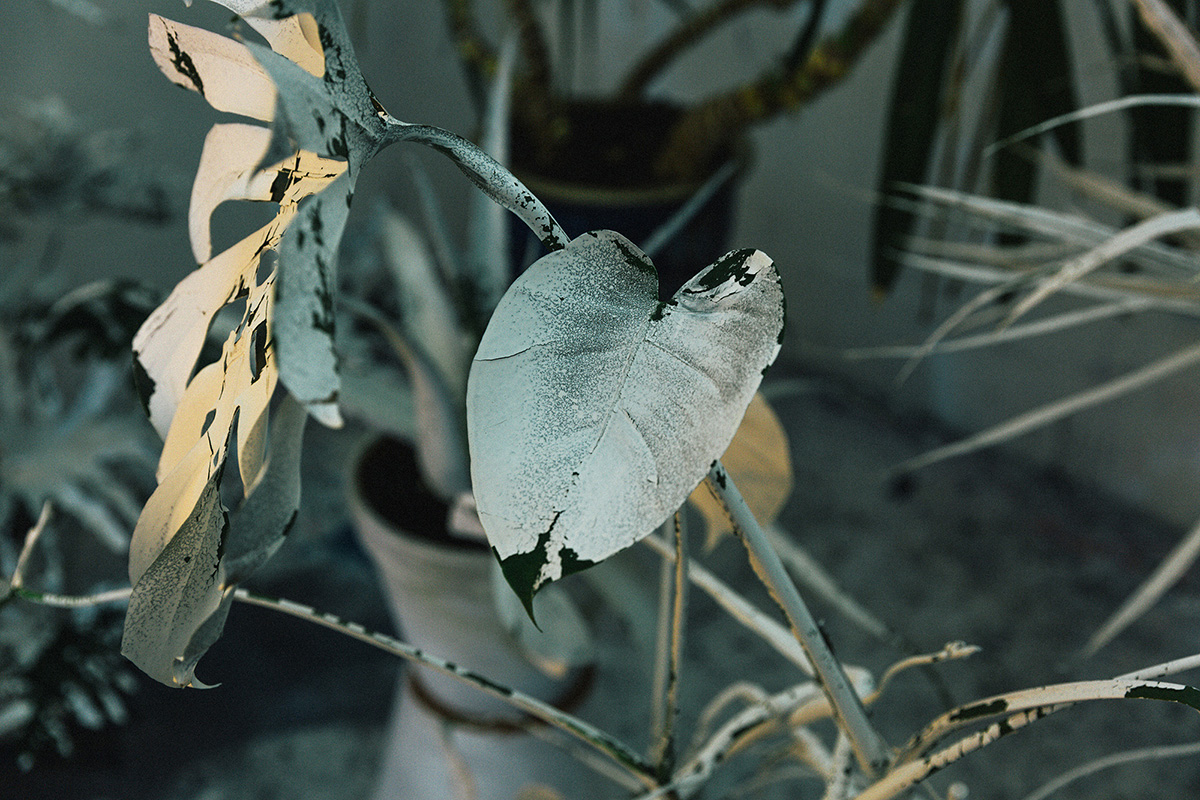
“I’m interested in this idea of abstraction, and painting on plants is just one element of that. I don’t think of it that differently than a normal painting I might do, and I’m usually doing them all at the same time, surrounding myself in the studio with paintings and plants. They talk back and forth with each other.”
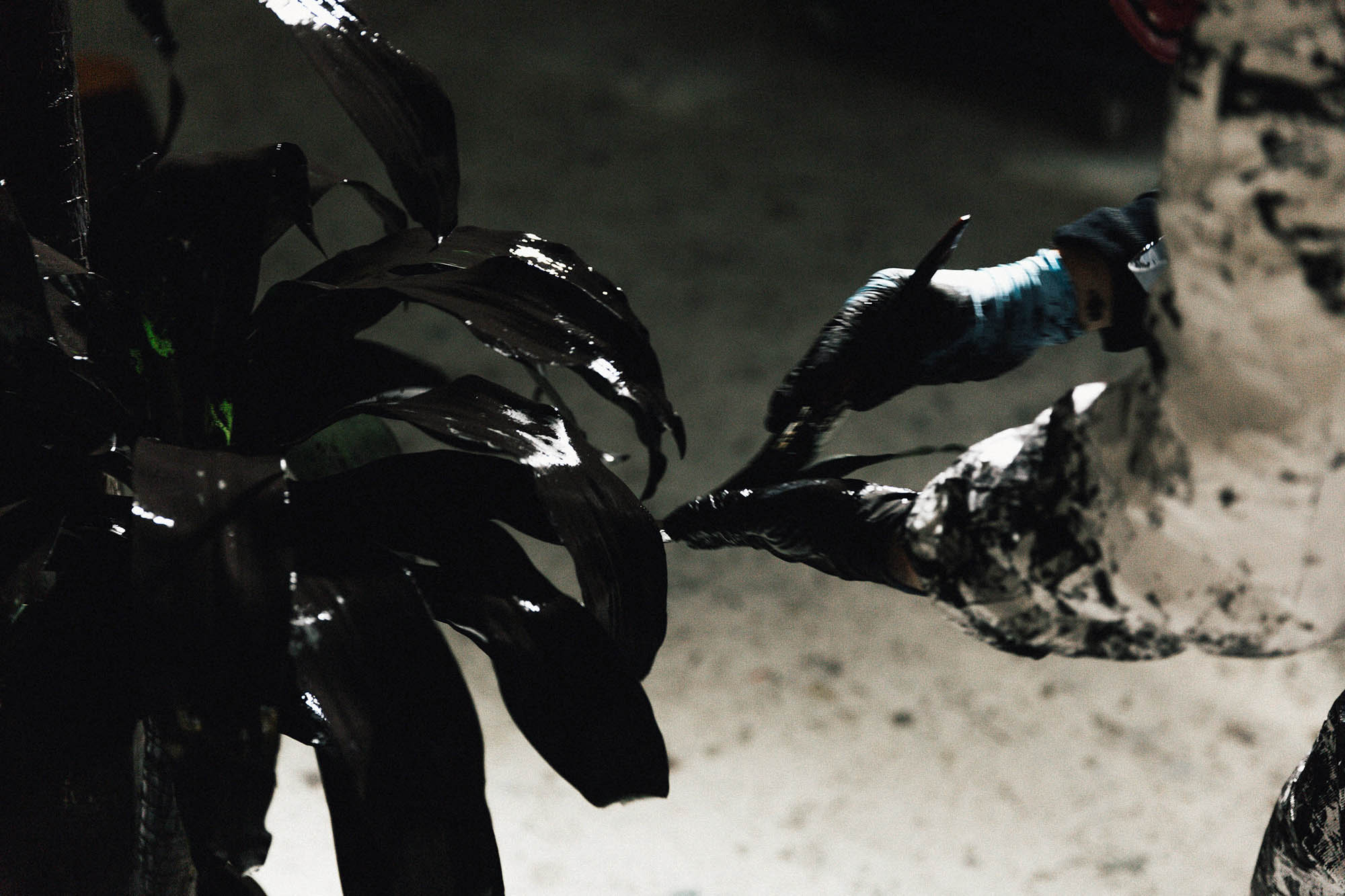
“Painting the plants black has an unnatural feeling about it. People don’t know if they’re completely fake, especially when they’re first painted. Once they grow out of it, it really starts to unfold for people. That the paint doesn’t block the necessities of life for the plant. That it can grow from within. That the ultraviolet rays can go through the paint and provide everything the plant needs to grow.”
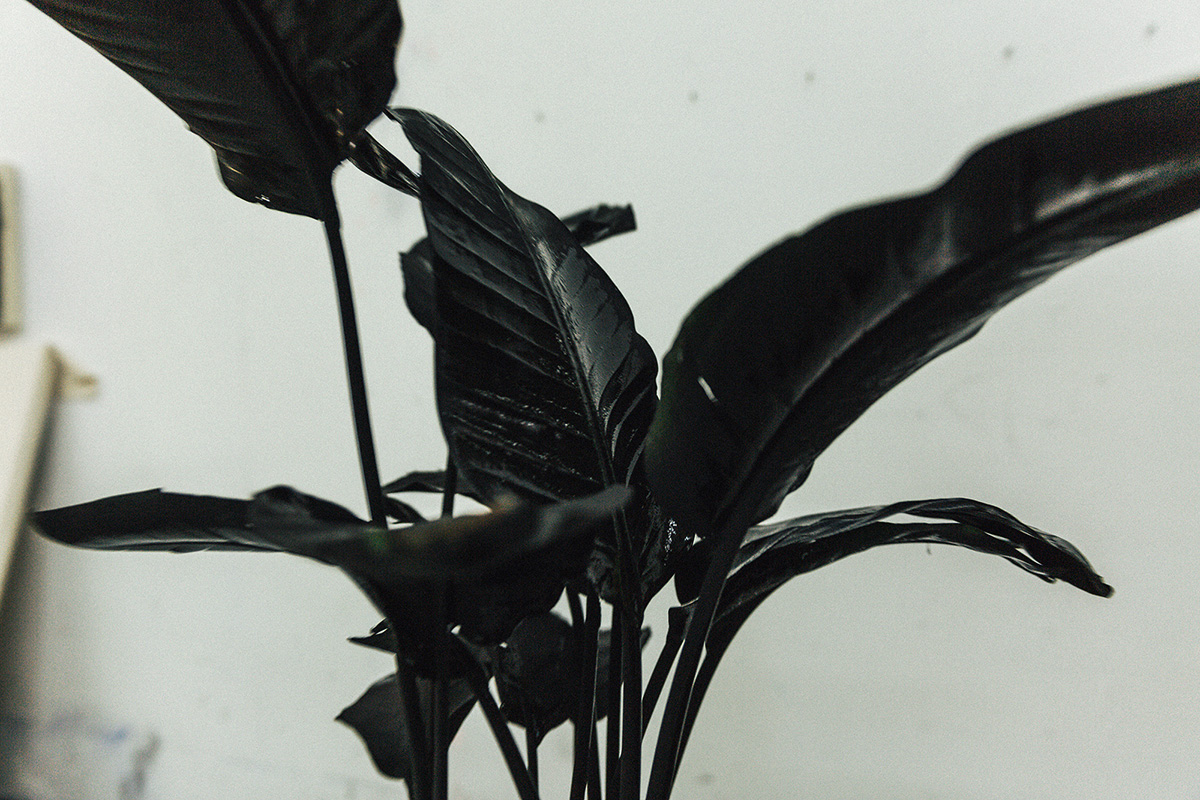
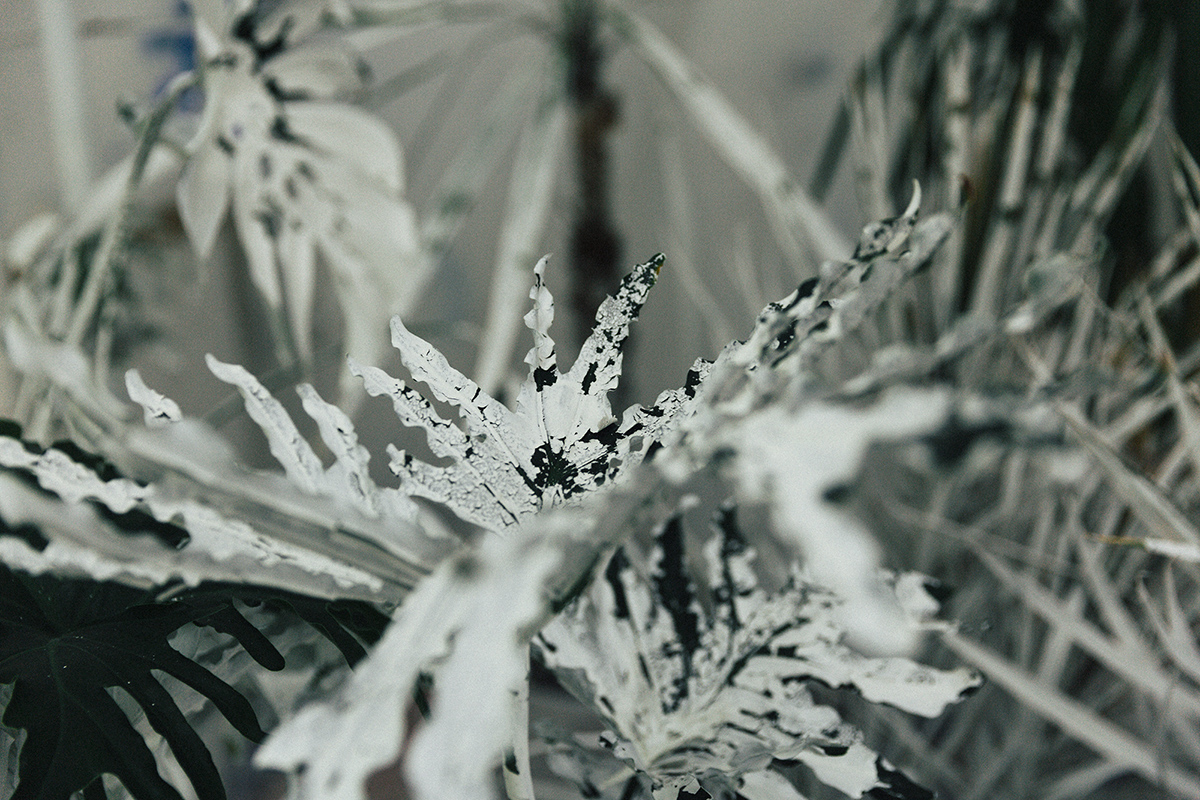
“Seeing it grow is reassuring, but at the same time, I’m conflicted about the plant, this non-native plant, and it’s journey to be where it is. I’m really interested in that relationship, setting them up like a still-life, a landscape painting, some kind of unnatural sense of the landscape. I’m trying to create a little tension, and disclaim that.”
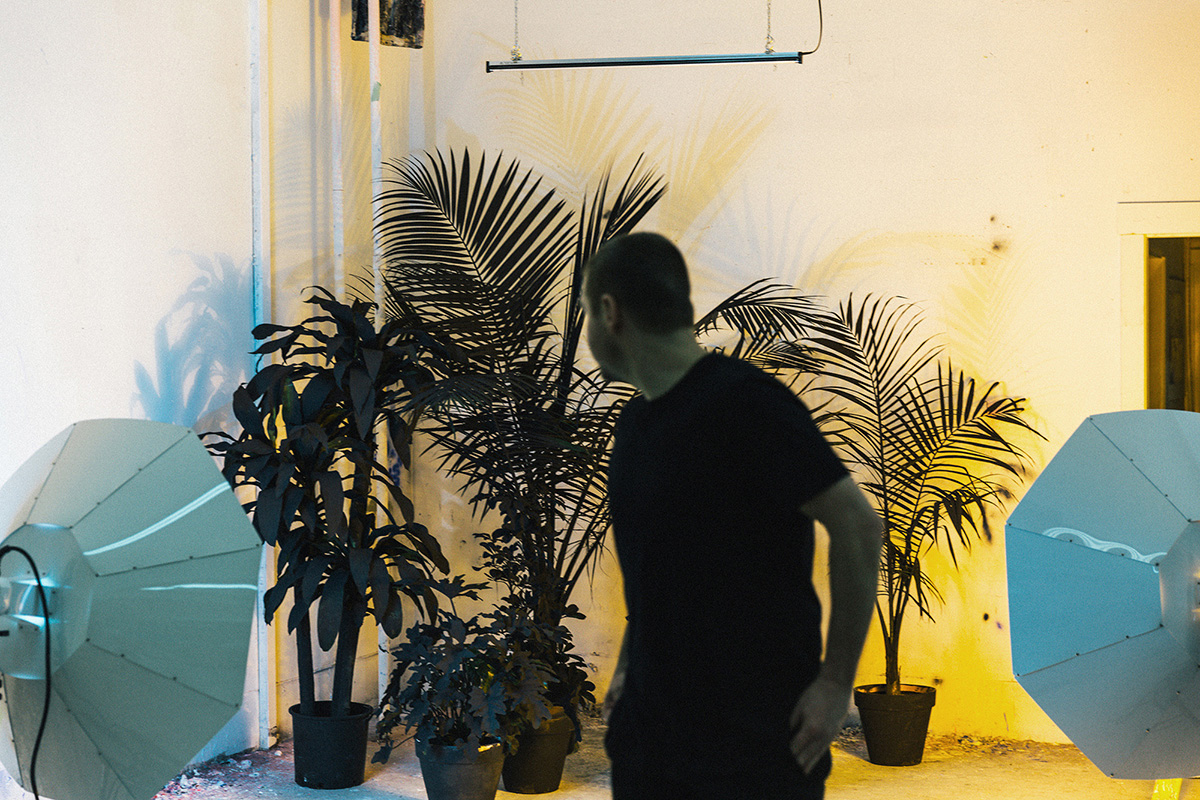
“I usually display the plants in a gallery with grow lights, often a high powered kind of LED grow light, to give the plants the best chance to grow. I think that also creates a bit more of a painterly sense, adding the shadows and the light on the plants, it makes them look a little more abstract once they’re all painted black or white. It’s important for me to create the sense that it is a painting.”
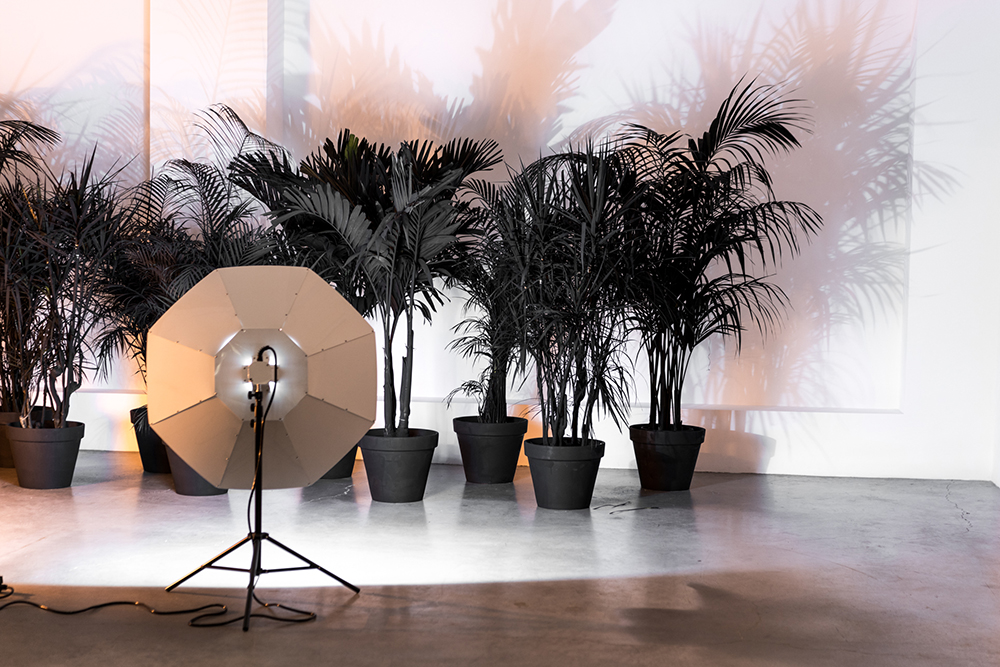
“They become very abstract once the lights are shining on the plants. You have the shadows play on the wall, it’s also a fake sun or sunset, it never changes. You just have this sense that it is one moment in time.”
Above: Black Plants, 2017.
wings+horns showroom, New York, NY.
Below: House Plants, 2017.
Contemporary Art Gallery, Vancouver, BC.
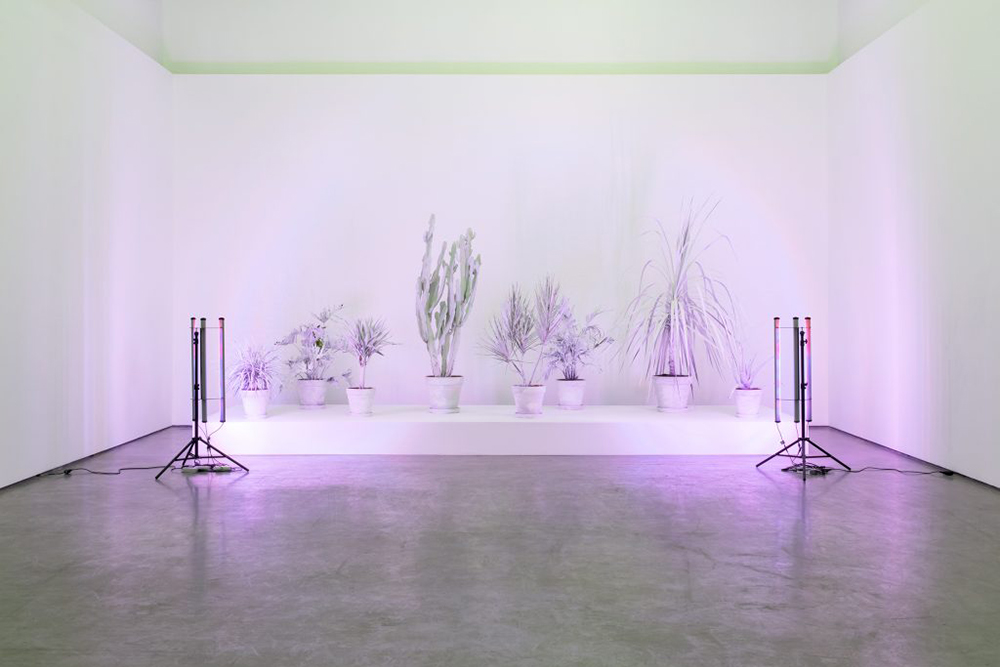
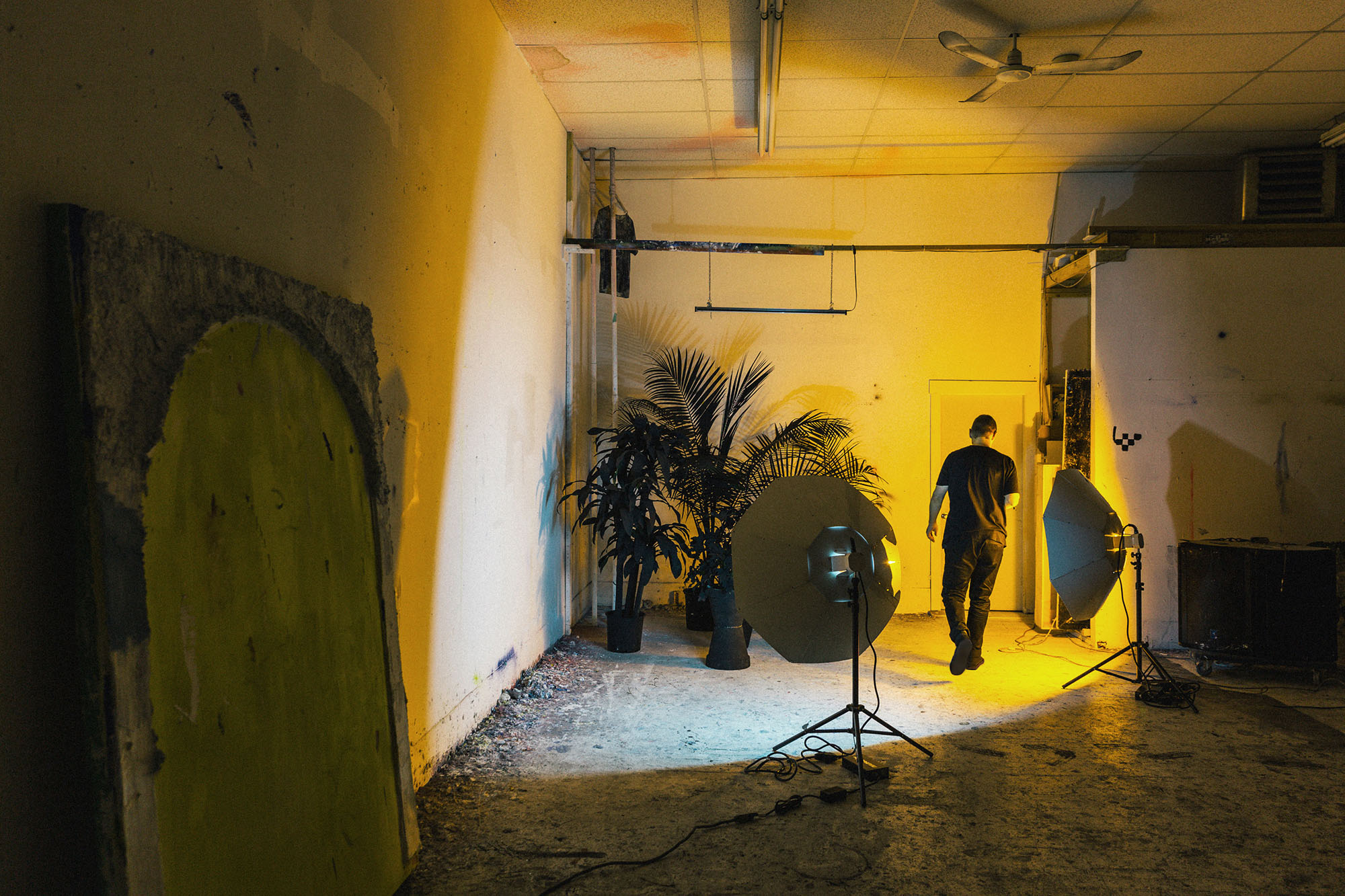
Andrew Dadson wears the Original T-Shirt, Tokyo Pant and Suede Slip-On.
